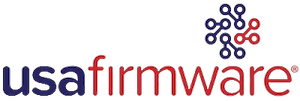Implement Correctly and IIOT Can Be Powerful
The Industrial Internet of Things (IIOT) is an incredibly powerful tool for data collection, exchange, and analysis, and can help your company achieve improved productivity and efficiency.
IIOT takes IoT to a whole new level, with greater scale, complexity, robustness, and critical nature for large industrial applications such as manufacturing facilities, energy plants and agricultural sites.
Let’s start with a short description of IIOT. The industrial internet of things (IIOT) refers to a convergence of Operational Technology (OT) and Information Technology (IT) through interconnected sensors, instruments, and other devices that are networked together with computers' industrial applications, including manufacturing and energy management. This connectivity allows for data collection, exchange, and analysis, which helps improve productivity and efficiency as well as other economic benefits. The IIOT allows for a higher degree of automation by using cloud computing to refine and optimize the process controls.
This is really powerful stuff. The power of IIOT is unquestioned and can translate into significant return-on-investment. Let me outline four examples to keep in mind.
- Security
The fact that we can gather a lot of data and then utilize AI algorithms to make determinations on whether, for example, there is theft transpiring, is amazing. This is very powerful when you think of the types of theft that can be monitored–things like illegal energy consumption, store surveillance, and so forth. To do this level of processing you need to be able to get this data up to the cloud, something you should take into consideration with IIOT.
- Performance Indicators
In an industrial space you can gather and use a great deal of information without it ever leaving the premises. However, it can be done via the internet, or selectively on premise where you send only specific types of data to the cloud such as warnings, or red flags.
In a facility, you can monitor all sorts of interesting information and look for anomalies. Let's say you have a petrochemical facility, and you want to monitor temperature, pressure, and vibration. All of these things can contribute to potential anomalies. With AI or without, you can proactively monitor situations to give your team a heads-up before a failure is about to happen. If the anomalies become severe enough, the alerts can then shut lines down.
Get in front of an issue before something tragic occurs. Through monitoring and looking for patterns, you can get up-front indications about potential issues and give your teams time to conduct preventative maintenance. Without this, you literally must wait for a failure which can potentially lead to worker injuries, damaged equipment, lost productivity, and lower profits. With that said…
- Safety
There are many ways safety can play a role here. Let’s go back to the petrochemical plant example. If you're not monitoring your data and there's an equipment vibration, it could lead to a breakage and severe equipment damage, potentially impacting human safety as well.
Also, let's say you're working in a pretty rigorous environment where the employees are using tools, and those tools can be monitored. When the tool is used properly, for example, it has a certain voltage and energy profile, whereas when it’s used incorrectly, it shows a different profile which could potentially lead to an injury.
You want to be able to monitor those kinds of things to be preventative and proactive to help ensure these scenarios don’t occur.
- Gamification
Game verification, or gamification, is a great tool to use in high turnover environments. It’s a way to make environments that might be difficult to work in a little bit more fun. For example, gamification can collect data and reward employees for, using the tool example above, using a tool the right way. It seems simple, however, recognizing employees for doing things the right way can create loyalty and potentially reduce turnover.
IIOT—Complex and full of opportunity
I welcome your thoughts on this. IIOT is powerful and, depending upon various factors, can be complex. If you take the right steps, you can see great improvements in productivity, profitability, and efficiency.
Message me on LinkedIn and let know what you think, or if you would like to learn more about how our Design Services and Talent Solutions teams can bring your vision to life with the right solutions and people.
Have a great day,
Bob Scaccia
Bob Scaccia, CEO and Founder of USA Firmware, formed the company in 2011 out of his passion for the art firmware design. Bob graduated with a BSEE in Electrical Engineering and quickly built a career that would lead him to become an expert in his field and a visionary entrepreneur in the industry. His past work experience includes design management and leadership roles in firmware with organizations Raytheon, Philips (formerly Picker International), Keithley Instruments and Thermo Scientific. Bob has grown the organization from a $200,000 per year business to a multi-million-dollar, award-winning business today. In addition, Bob is a firmware influencer and powers the world's largest embedded firmware group, as well as a firmware contributor with articles and podcasts on embedded.com. He's also published several articles including, "What a firmware curriculum would look like" and has been interviewed by various radio personalities on the topic of firmware and the embedded future.
